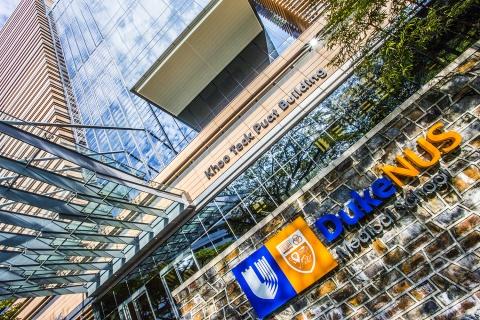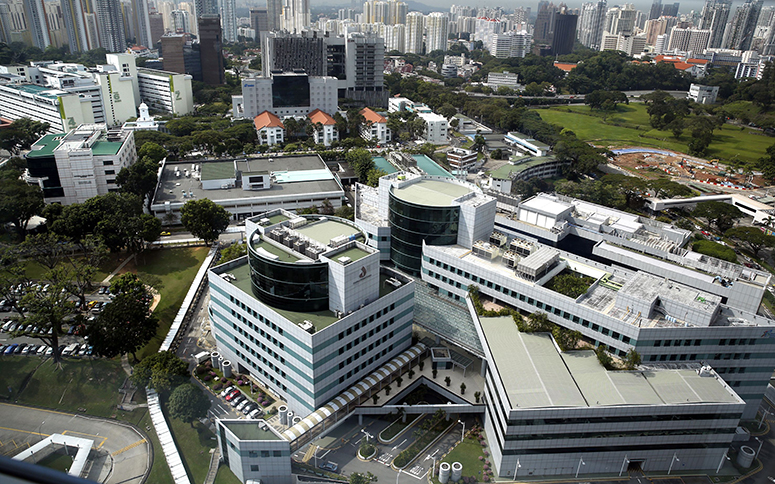
Photo: Duke-NUS Medical School in Singapore
Singapore has established an efficient and widespread system of healthcare that is considered to be one of the best in the world. At Singapore General Hospital, the largest hospital in the country, the Surgery Academic Clinical Program (ACP) collaborates with the Department of Surgery at Duke in an exchange of medical knowledge, insight, and research.
Duke’s relationship with Singapore General began in 2005, with the foundation of the Duke–National University of Singapore Medical School. In a biomedical sciences initiative, Singapore sought an international partner with a strong history in research and education to offer students innovative medical educational experiences. Since its inception, the Duke–NUS has enrolled over 500 students from over 25 countries, the first U.S.-style medical school in Singapore.
Similar to the strong connections that exist between Duke University Medical Center and the University itself, Singapore General Hospital’s campus offers a training ground for Duke–NUS students. As a campus that combines innovative medical research with training and education, the hospital and its Surgery ACP offer valuable insight to Duke Surgery.

“Through discussions between our department and the Surgery ACP at Singapore General, we have begun to learn each other’s strengths,” says Dr. Allan D. Kirk, Chair of the Duke Department of Surgery. “Our collaboration has allowed us to better understand different patient populations, in an effort to shift educational paradigms as we prepare today’s surgeons with a global mindset.”
Dr. Kirk says one area that particularly benefits from the partnership is cancer research, as risk factors for breast cancer and hepatocellular carcinoma vary greatly depending on patient population.
Dr. Tan Hiang Khoon, Chair of the Surgery ACP at Singapore General, shares Dr. Kirk's enthusiasm for the partnership between the two departments.
"There is tremendous opportunity for synergistic collaboration between the Department of Surgery in Duke and SGH," says Dr. Tan. "Over the last few years, we have had a steady flow of bilateral faculty visits which cemented the close relation between our two departments."
At a medical center that meets the needs of half of the population of the country, Dr. Tan says the patient population of SGH is an ethnic mix from Singapore as well as South and Southeast Asia. This population is very different from that of Durham.
"This diversity of patient mix presents a unique opportunity to understand disease phenotype in diverse populations, and therefore offers immense potential for research collaboration," Dr. Tan says.
The goals of the Duke School of Medicine and Duke–NUS Medical School align not only to foster educational growth, but to offer opportunity for students to become clinical leaders.
In an effort to capitalize on this unique opportunity, the two medical schools are creating a resident exchange program which will offer first-hand experiences with different patient groups. The program will hopefully begin within 2 years and will further the department's goal of training physicians to become global leaders.
